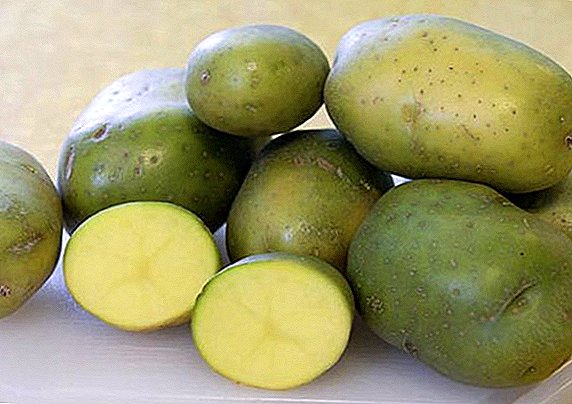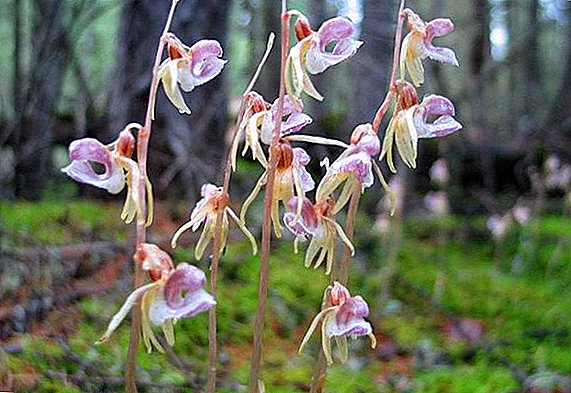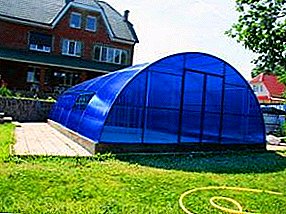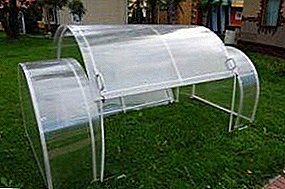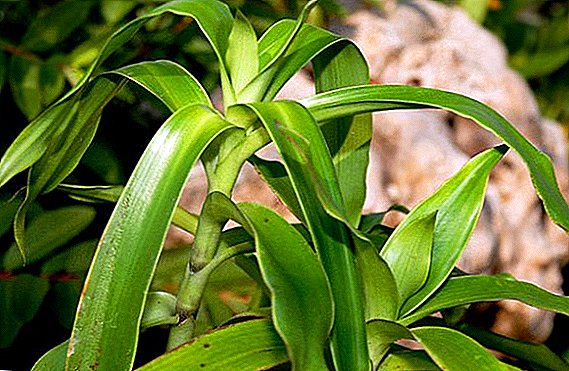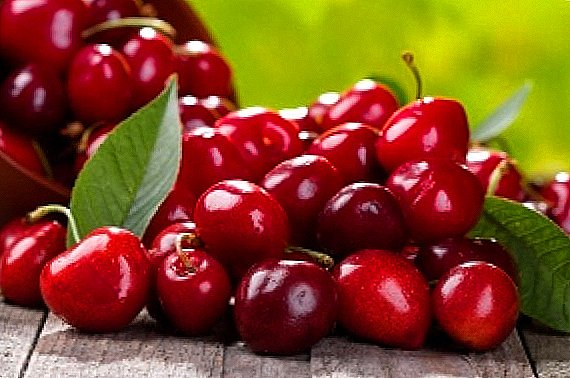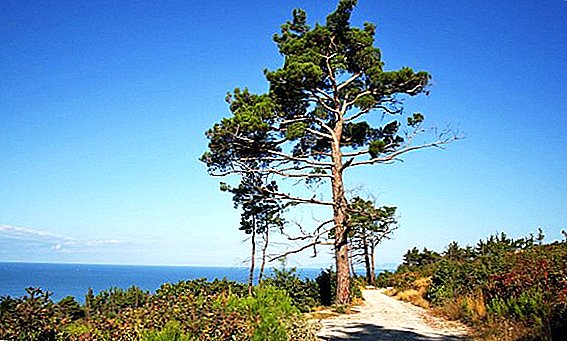 Pine is an evergreen representative of the Pine family, which retains its viability for 100-600 years and reaches 35-75 meters in height. She is not afraid of cold, snow, wind, drought. The tree loves sunlight and reacts sensitively to pollution in the air, and because of its healing properties it is used in the manufacture of medicines. There is a huge variety of varieties and types of pines. All existing types of pines are usually classified according to the main characteristic of the description - the number of beam needles:
Pine is an evergreen representative of the Pine family, which retains its viability for 100-600 years and reaches 35-75 meters in height. She is not afraid of cold, snow, wind, drought. The tree loves sunlight and reacts sensitively to pollution in the air, and because of its healing properties it is used in the manufacture of medicines. There is a huge variety of varieties and types of pines. All existing types of pines are usually classified according to the main characteristic of the description - the number of beam needles:
- a group of double conifers (pine, maritime and similar);
- three-coniferous (such as Bunge);
- five-coniferous (Weymutov, Siberian, Japanese and others, having a similar coniferous beam structure).
Ordinary
Pine (lat. Pinus sylvestris) is a common species that grows in Asian and European latitudes. The tallest trees of this species are found near the Baltic Sea (southern part of the coast).  They reach 40-50 m in height. Straight trunk covers the bark of a gray-brown color of enviable thickness, strewn with cuts. The upper layer of the trunk and branches is a thin bark with a characteristic red-orange color, prone to flaking.
They reach 40-50 m in height. Straight trunk covers the bark of a gray-brown color of enviable thickness, strewn with cuts. The upper layer of the trunk and branches is a thin bark with a characteristic red-orange color, prone to flaking.
Did you know? Pine tree has powerful antiseptic properties. Only 500 microbes accounted for 1 cu. m of air in the forest, while in a huge city - 36 thousand.Pointed needles, whose length is 8 cm, the trees of this species have a blue-green color and are characterized by rigidity. It serves as an ornament for 2-7 years. 7-centimeter cones of elongated-ovoid shape are filled with black and gray seeds.
At a young age, the tree is distinguished by a cone-shaped crown, which expands and rounds over time. The flowering period is in May - June. This species has a fairly wide range (Globosa Viridis, Repanda, etc.) and is famous for its strength and a high degree of resinous. 
Mountain
Mountain pine (lat. Pinus mugo) mainly occupies the south and center of Europe. The tree has a pin-shaped or creeping multi-stemmed crown, single-growing cones, as well as curved needles with a dark green color.
Familiarize with such representatives of the Pine family as Siberian cedar pine, Weymouth pine, balsam fir, Serbian spruce, Canadian fir, mountain pine, and dwarf pine.The wood of the mountain dweller serves as a production raw material for joinery and turning products, the resin is a material for the manufacture of cosmetics and medical preparations. This species is famous for its many varieties designed to decorate landscapes (Mugus, Carstens, Pug, Hesse, etc.).
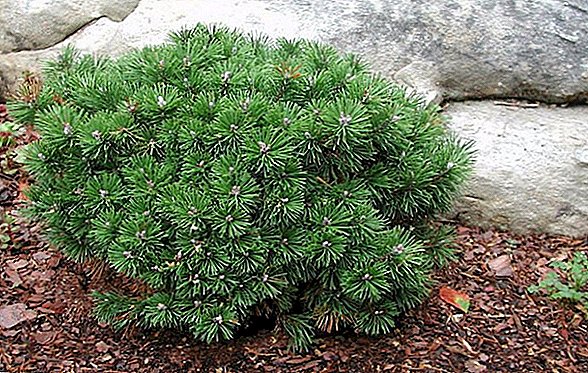
Siberian
Siberian pine, or Siberian cedar (lat. Pinus sibirica), lives in the taiga in the East and West of Siberia. The standard height of the representatives of the species is 20-25 m, but there are also 40-meter trees.
They have thick branches and a multi-conical crown of soft dark green needles (14 cm long).
The barrel has a gray-brown color. Siberian beauty cones hide cedar nuts (seeds) under their scales. 
Black
Austrian black pine (lat. Pinus nigra) is a representative of the shadow-like evergreen from the North of the Mediterranean, whose height reaches 20-55 m. Young trees are characterized by the presence of a cone-shaped crown, but adults have an umbrella-like.
Dark green with a gray tint needles inherent rigidity and luster, and sometimes dullness. This species is famous for its black bark covered with deep furrows.
Verbal description and photo does not convey all the beauty and majesty of black pine. Brilliant cones and straight needles are a wonderful addition to any garden design. Pierik Bregon, Piramidalis, Austriaca, Bambino are among the most popular varieties of the species. 
Balkan (Rumelian)
Balkan Pine (lat. Pinus peuce) - a resident of the mountainous areas of the Balkan Peninsula. Shade-tolerant fast-growing species unpretentious to the habitat conditions. Trees grow to a height of 20 meters. Rumelian representatives create forests of pure or mixed types at 700-2300 m above sea level.
The tree is characterized by a grayish-green needles of enviable density, forming a cone-shaped crown. In the early age period, there are no cracks on the brown with a gray tinge of the tree bark, but every year it becomes lamellar in shape and changes color to red-brown. 
Himalayan
Himalayan pine, or Walliha (lat. Pinus wallichiana), lives on the slopes of Annapurna (South), in the Himalayas, at a level of 1.8-3.76 km above the sea. This decorative tree grows 30-50 m upwards.
The tree is characterized by the presence of a pyramid-shaped crown of gray-green needles and long cones. Popular varieties of Himalayan species: Densa Hill, Nana, Glauca, Vernisson, Zebrina. 
Weymouth
Pine Weymouth, or Eastern White (lat. Pinus strobus), distributed in the north-eastern part of North America and southeastern Canada. The tree is very close to the ideal because of its direct trunk with a 67-meter growth threshold. Its diameter ranges from 1.3 to 1.8 m.
Important! Pine Weymutov begins to bloom only at the age of 10 years.The crown of this pine species at an early age is characterized by the presence of a conical shape and straight needles of 10 cm in length. Over time, it acquires an irregularly rounded shape. The bark is different purple tint.
This type finds its use in construction. Varieties such as Aurea, Blue Shag, Вrevifolia, Sontorta, Densa are very popular. 
Virginian
Virginia pine (lat. Pinus virginiana) is a fast-growing inhabitant of the eastern latitudes of North America. Its height is from 10 to 18 m. The crown is irregularly rounded. The bark with scaly-furrowed relief has a gray-brown color, which acquires a reddish tint to the top of the tree.
The tree is characterized by the presence of a hard straight yellowish-green needles and egg-shaped cones. Reddish-brown buds can be dryish or completely coated with resin. Virgin pines prefer cozy and sunny places, a lot of heat and fertile soil.
Important! The huge urban area is not suitable for growing pine plantations due to excessively polluted air.Often this look is used for a decor of garden and park zones. It goes well with other trees (oak, maple and others).

Cedar Korean
Korean pine pine (lat. Pinus koraiensis), called Korean cedar, has the main difference from other species - slimness. Its height does not cross the 40-meter line.
It will be helpful for you to learn about the pests of coniferous trees, especially about methods of fighting the caterpillars.With its width, the crooked crown slightly resembles a Siberian species, but at the same time it differs in openwork.
Green-green needles of branches reach 20 cm in length. The tree is characterized by the presence of elongated cones with scales bent at the ends. This is one of the pine species that can survive in the city. Popular varieties include Variegata, Glauka, Vinton. 
Cedar elfin
Pine stanica, or cedar elfin pine (lat. Pinus pumila), is a common species in the territory from Primorsk to Kamchatka and in the North. Bushy trees grow only up to 4-5 m. Crohn is quite razlohay and may differ in shape for each individual species: tree, creeping or bowl-shaped.
The needles of cedar elfin wood have a bluish-green color. Pine cones with their ovoid-elongated shape do not belong to large fruits. Seeds are presented in the form of nuts. The varietal range of cedar elfin is quite extensive: Blue Dwarf, Globe, Jeddeloh, Nana and others. 
Dahlia
Pine-flowered pine, or Japanese red (lat. Pinus densiflora), is limited to 30 meters in height. The tree is more common on rocky terrain (for example, the slopes of China, Japan and Korea).
The curvature of the trunk - its characteristic feature. The bark of young branches of the tree has a reddish tint, the old ones have an inconspicuous gray. Crohn is different density. It is quite razlagaya and rounded. 
Hooked
Pine hooked (lat. Pinus uncinata) is grown exclusively for decorating landscapes. Her needles - a reduced copy of the needles of Scots pine. At the same time, the size of the bumps exceeds the size of the needles.
As a rule, trees of this species are planted in groups or arrays, but a single variant is also not uncommon. 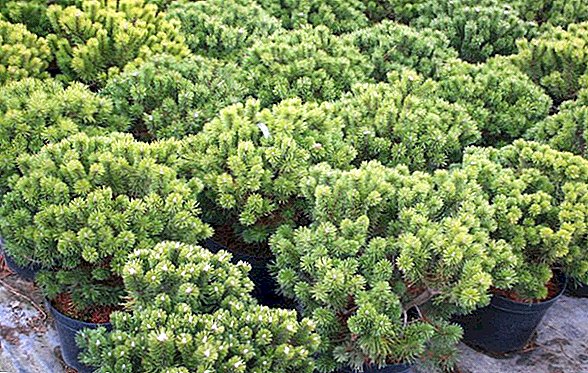
Crimean
Crimean pine, or Palassa (lat. Pinus pallasiana), is one of the tall (about 45 m in height) species that inhabit the territory of Crimea and the Caucasus. Despite the fact that it is listed in the Red Book, there are often cases of using this tree as a building material.
A Crimean resident belongs to long-lived plantations, as she has maintained her vitality for almost 600 years.
Did you know? The oldest tree in the world is Methuselah. She is about 4845 years old. Her place of residence is the California National Reserve.Pyramid-shaped (early life) and umbrella-shaped (old age) crown forms, 12-centimeter prickly needles and shine of oblong cones are characteristic of wood. The top of the trunk of a dark brown shade is covered with deep furrows.
Representatives of the Crimean species also have decorative properties. 
Sosnowski
Pine Sosnowski (lat. Pinus sosnowskyi) grows in the mountains of the Crimea, the Caucasus, Iran and Turkey. She is the owner of cones with hooked scales.
The needles of the tree of this species differ from others in their exceptionally green color. Sosnovsky Pine belongs to winter-hardy evergreens.
Pine as a genus has many species, each of which is characterized by healing and antiseptic properties. It is popular not only among manufacturers of medicines, but also landscape designers, and even construction companies (mainly because of its value as a building material). 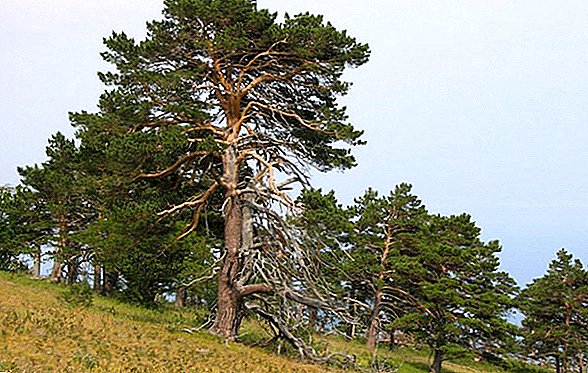 However, this tree can please the eye for more than a dozen years.
However, this tree can please the eye for more than a dozen years.


